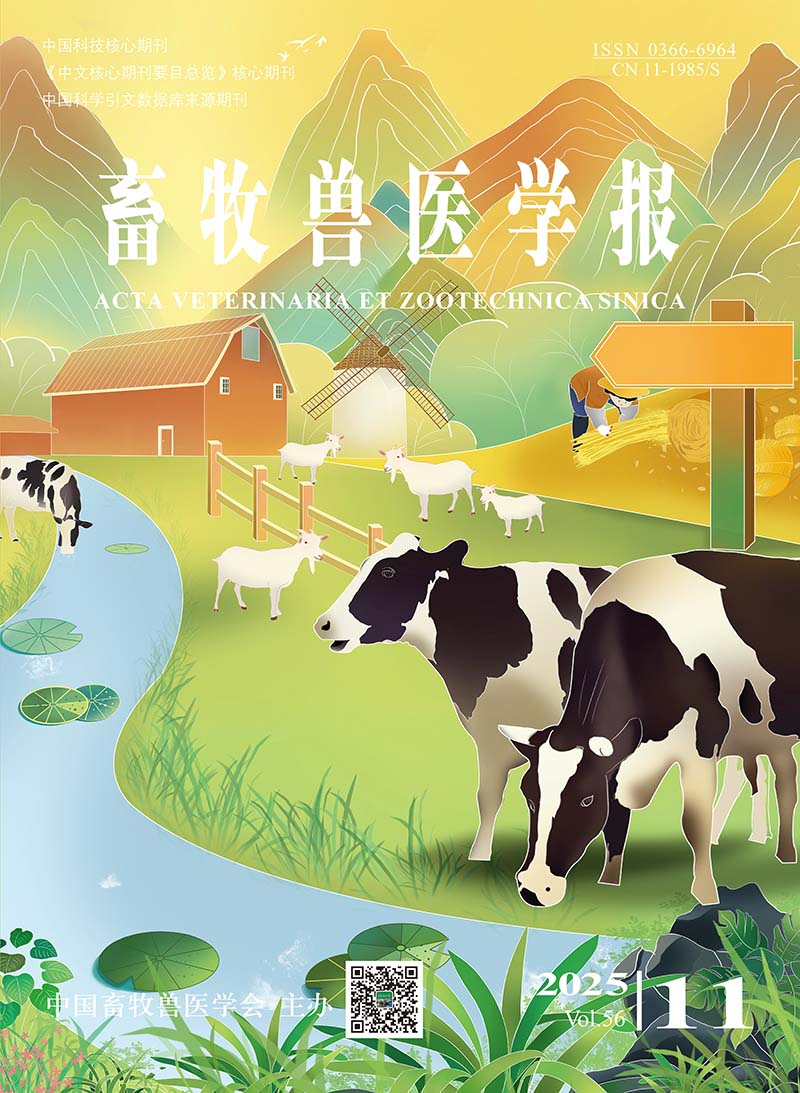-
Key Genes and Regulatory Network Analysis of Lipid Metabolism Differences between Back Fat and Abdominal Fat of Large Diqing Tibetan Pigs at Different Growth Stages
- WANG Lin, MA Li, ZHANG Bo, DENG Jun, ZHANG Hao, OUYANG Xiaofang, YAN Dawei, DONG Xinxing
-
2023, 54(2):
520-533.
doi:10.11843/j.issn.0366-6964.2023.02.010
-
 Abstract
(
308 )
Abstract
(
308 )
 HTML( )
HTML( )
 PDF (10987KB)
(
120
)
PDF (10987KB)
(
120
)
-
References |
Related Articles |
Metrics
The aim of this study was to screen the key genes of lipid metabolism differences in back fat and abdominal fat of large Diqing Tibetan pigs (TPs) at different growth stages by transcriptome sequencing. In this study, 36 TPs with the same parity, birth date and weight of about 10 kg were randomly divided into 3 groups for fattening experiment under the same conditions. The pigs were slaughtered at the weight of 40, 80 and 120 kg, respectively, and carcass perfor-mance was measured. Back fat (BF) and abdominal fat (AF) of 3 pigs in each group were collected for high-throughput transcriptome sequencing. The sequencing data were spliced and compared to screen for genes with significant differences related to lipid metabolism, and then GO, KEGG analysis and gene interaction network analysis were performed. The results showed that 486, 765 and 339 differentially expressed genes (DEGs) were screened from AF vs. BF of large Diqing Tibetan pigs weighing 40, 80 and 120 kg, respectively. The qPCR results of randomly selected 5 significantly DEGs such as EGR2 and SOD3 were consistent with the transcriptome sequencing results. These DEGs were mainly enriched in GO items such as muscle contraction, cell adhesion and positive regulation of mesenchymal cell proliferation, and KEGG pathways such as cardiac muscle contraction, PI3K-Akt signaling pathway, and Hippo signaling pathway. In 40 kg group, EGR2, RARRES2, TMOD4 and SFRP2 genes were located in the network core, EGR2, RARRES2 and SFRP2 were up-regulated in abdominal fat, and TMOD4 was down-regulated. In 80 kg group,THBS1, PPARA, NRIP1 and LPL genes were located in the core of the network, and all 4 core genes were up-regulated in AF. In 120 kg group, HTRA1, TSHR, LRRK2, STC2, SHOX2 and SOD3 genes were located in the network core, LRRK2 and TSHR were up-regulated in AF, while SHOX2, SOD3, STC2 and HTRA1 were down-regulated. The results suggested that 14 core genes including EGR2, THBS1 and TSHR finely regulated the lipid metabolism of BF and AF at different growth stages of TPs. 10-40 kg, 4 genes such as EGR2 were located in the network core, the genes promoting adipocyte differentiation and proliferation were up-regulated in AF, and the switch genes for fat synthesis were down-regulated. 40-80 kg, THBS1 and other 3 genes were located in the network core, and the genes promoting triglyceride synthesis, cholesterol formation and lipid accumulation were up-regulated in AF. 80-120 kg, 6 genes such as LRRK2 were located in the network core, the genes promoting triglyceride accumulation and fatty acid oxidation were up-regulated in AF, and the genes inhibiting fat decomposition and fat droplet formation were down-regulated. The results can provide basic data for the analysis of the regulation mechanism of differential fat deposition in different parts of local pigs, and provide reference for the targeted breeding of TPs.






